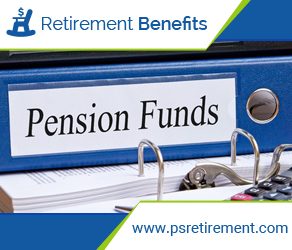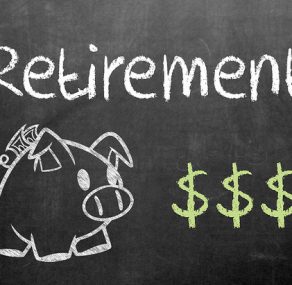Articles
All the latest articles covering the information that you will be craving to devour will be available via this category. From getting to know how indebted our company is to reading about the presidential elections; from knowing about new retirement plans to finding out how security breaches can affect your life; you can browse it all!
For more articles, visit our articles’ section.
Public Sector Retirement, LLC (‘PSR,’ ‘PSRetirement.com’ or the ‘Site’) is a news channel focusing on federal and postal retirement information. Although PSR publishes information believed to be accurate and from authors that have proclaimed themselves as experts in their given field of endeavor but PSR cannot guarantee the accuracy of any such information not can PSR independently verify such professional claims for accuracy. Expressly, PSR disclaims any liability for any inaccuracies written by authors on the Site, makes no claims to the validity of such information. By reading any information provided by June Kirby or other Authors you acknowledge that you have read and agree to be bound by the Terms of Use
Is it Time to Change Our Outlook on Annuities?
/by AdminHistorically, annuities have been underutilized by advisors even though they trace their origin to the Roman Empire. At the Pershing’s annual Insite conference, panelists told attendees that that could change.
According to Hans Schemmel, Director of Retirement at Pershing, the unpopularity of annuities in the wealth management industry stems from compliance concerns and their required extent of processing.
“The important question to ask is whether or not these products can be the right ones for your clients,’’ said Schemmel.
Issuers are contributing to the increase in annuity sales. They are doing this by reframing their appeal to customers. What we have witnessed is the variable annuity industry that has perfected at telling a story.
Repass added that the information that all clients need to hear is that annuities are one of the products that guarantee lifetime income after retirement. Many retiring clients will find themselves in a crisis, especially in replacing their income. This is due to the oncoming generational wealth transfer. Previous generations can rely on Social Security and pensions, but current clients will have a hard time.
“We can guarantee an outcome through an insurance company that won’t be possible with any other entity. It gives assurance to your clients that they can’t outlive their income if they have chosen to purchase this,” continued Repass.
Challenges
According to panelist Jason Berkowitz, chief legal and regulatory affairs officer at the Insured Retirement Institute, changes at the legal and regulatory levels would have to be made for annuities’ popularity to continue increasing. Currently, the tie the product has to insurance companies can be a cause of concern to clients.
Given the state of flux surrounding SEC and DoL rules, advisors may not be willing to advise clients to take up annuities. The SEC’s Regulation Best Interest and the DoL’s fiduciary standard have made strides to ensure the protection of clients, but they aren’t perfect. Neither are they in effect.
Streamlining Ahead
The advisors that are considering continuing to suggest annuities to their clients, or adding them to their investment menu, should know that insurance companies and broker-dealers are striving to make the annuity experience a good one, both for them and their customers. On the business side, some commission payments on annuities have an 8-week processing time. On other platforms, the processing time is one day.
Schemmel also said that clients want to be able to see the status of their retirement benefits on one platform. This is where asset consolidation is helping.
Repass said he understood why most advisors couldn’t suggest annuities to their clients. “We were operating under the vernacular of if we build it, you are going to come,” he added.

TSP Alerts Agencies to Pending Withdrawal Policy Change
/by AdminSoon employees that make withdrawals to cover for financial hardships won’t have to wait for 6 months before making investments again, as they have had to do in the past. This policy change is expected to take effect on September 15, according to a notice sent to agencies.
The notice tells agencies to notify employees that have made withdrawals due to financial hardships of this potential change. It also recommends that the agencies to make changes to their payroll systems as necessary.
The Financial Hardship In-Service Withdrawal Report (Report 5501) will be generated through September 13, 2019. This report won’t be available after September 15, 2019. Additionally, any withdrawals made on or after that date won’t require a six-month suspension on contribution.
Starting September 15, 2019, any employee that received a financial hardship in-service withdrawal and is currently under suspension as a result will be permitted to restart TSP investments. Investing may be possible even if they have not have completed the 6 months by that date in September. The TSP should send them a notice and inform them that they can reinvest, but the participant is responsible for restarting these investments. They can do this by submitting a new “TSP Election Form.” Alternatively, this can be accomplished via the agency’s pay system.
However, the change does not affect any other forms of in-service withdrawals, such as age-based withdrawals, allowed without a tax penalty for employees at 59 years of age or more. Those that take that form have always been permitted continuous investment. The current lifetime of such a withdrawal should be ended at the same time as other changes in withdrawal.
The TSP, which is similar to a 401(k) program, offers five funds, one of which is tracking international stocks. In 2019 it should be broadened to include emerging markets. Additionally, the TSP offers funds that are referred to as ‘lifecycle’ funds, which mix investments in the basic funds in ratios including a variation with expected withdrawal times. The mixes become more conservative over time.

Understanding Annuities to Reach Investment Goals
/by AdminQuestion:
Let’s say a 90-year old has had an equity-indexed annuity. In the next month, he must decide whether or not to renew an income benefit rider that guarantees a return of 5%, if he so chooses, to start taking regular withdrawals. The cost of the ride is 0.25% annually. He needs neither the income nor the principal. He would have a 10% penalty if he took money out of his account right now as he is ten years into a 17-year surrender. Should he renew the rider? Is this a good investment for him?
Answer
First, it would be shocking if someone sold an 80-year old a 17-year old surrender schedule annuity. Unless when he was purchasing the annuity, he received a ‘signup bonus.’ This would mean he would receive a bonus at a fixed percentage, say 6%, for making a deposit into the annuity contract. If for example, he deposited $150000 into the account, his starting balance was $159000, the sum of the deposit and $9000 bonus. For giving him that bonus, the insurance company may have slapped on a huge surrender schedule.
In the surrender schedule are the details on the length of time and percentage penalty for taking out the entire investment. At the start of that surrender period, he would most likely have a penalty of 15 to 17%, which still stands at 10% ten years later. Surrender charges offer protection to the insurance company against fickle customers who might want to cancel the contract after the company has paid agent commissions or extended bonuses to the owner of the annuity. But 17 years is a very long time.
Your question can teach us the importance of investment objectives. No matter what an investor’s primary objective is, delivering on the objective is the main goal.
If this annuity were purchased in the chaos of 2009 when the idea of money getting lost in the market was a fear, this annuity that offered protection and a huge signup bonus would be tempting.
The strange thing is the benefit rider being slapped on the annuity. A benefit rider can only be used when the owner wants to use the account for his lifetime income. If there were no intentions of using the annuity for income, and these intentions haven’t changed, then renewing the benefit rider will be a waste of money.
Your question can also teach a bit about the nature of suitability. The person that would have sold this annuity would have been able to convince him about how suitable it was, which was not the case. The person was clearly not required to act in the client’s best interest.
Would this have been a good investment? He would have gotten a huge bonus, enjoyed downside protection, and even received tax deferral. But then he would have been restricted from withdrawing all of his investment. Even though the benefit rider would be a waste of money, the main objective at the time could have been income.

New Federal Tax rules Create Advantage for Real Estate Investment Trusts
/by AdminInvesting in rental property is what some millennials, and Generation X may wish to do with the money they inherit from their baby boomer parents. The property might be a retirement home or an apartment. While the idea of being a landlord may look like a good one, it has its demerits. For instance, various costs and risks are involved. Thus, it may not turn out to be a profitable prospect.
Real Estate Investment Trust
Real Estate Investment Trusts are an alternative to direct real estate investment. These firms sell their shares to investors. They use the earned cash to buy residential, commercial, and industrial property to lease and pay dividends to shareholders. Compared to direct property ownership, REITs have significant tax advantages.
The New Federal Tax Rules
A certain provision of the tax law came into effect last year. It makes it possible for individuals to get heavy deductions on REIT income. A 20% deduction is offered to investors filing jointly and individually with a taxable income of less than $315000 and $157000 respectively. Deductions on a reduced scale apply to investors with higher taxable income up to $415000 filing jointly and $207000 individually.
While REITs may become more attractive by tax legislation, it perhaps makes direct real estate investments less so. A provision that’s received widespread attention is the new $10,000 cap on the itemized deduction of state and local taxes. Much of this is from property tax. This has caused dread in areas where the high values of property have led to large deductions for homeowners. For those investors in residential, this provision is paring post-tax profits.
About REITs
Like stocks, most REITs are publicly-traded. This makes them highly-liquid, unlike most real estate investments. They are purchased and sold on major exchanges. While some REITs own property used for various purposes, most of them specialize. They own real estate used for healthcare facilities, shopping malls, and commercial office parks. Selecting these highly-specialized REITs for investment should be done after a keen analysis of specialized markets.
According to federal rules, entities must pay a minimum of 90% of its profits to shareholders in distributions to qualify as a REIT. Part of the income is in the form of taxable dividends. The rest is the return of capital. Many people that invest in rental property ignore the expenses involved and instead focus on the potential rental income. These investors also do not consider the risks that include property damage and unpaid rents. Many of them assume that values will rise with time, but this isn’t guaranteed. Even if that is the case, the gain before the sale may not completely compensate for a potential disparity between the cumulative costs and long-term income. In this case, contrary to the investor’s expectations, there would be no long-term profit.
Well-managed REITs can pay reliable dividends. However, they may encounter problems that result in losses being passed on to the investors in the form of pummeled share value, according to David Robinson, founder, and CEO of RTS Private Wealth Management.

3 Reasons Annuities Are the Unsung Heroes of Retirement Income Planning
/by AdminWhile some may argue that saving for retirement is pretty complicated, many people find it simple. You just need to set aside a part of your earnings yearly, invest for a long-time horizon, practice patience, and watch your wealth grow. When you reach retirement, you will start drawing income from your savings, and things will seem more complex. Due to this, retirees consider guaranteed income and safety of principal more important than average returns.
There are three ways of generating a safe income source in retirement:
1. Obtaining secure income from the state through Social Security or bonds.
2. Using a bank with a money market account or CD.
3. Using an insurance company through annuities or life insurance.
How Valuable are Annuities?
Researchers have, over time, have shown how annuities can add significant value to the financial security of a retiree. Here are the ways research has proved annuities to be valuable.
1. They Reduce Portfolio Failure
John Ameriks, Robert Veres, and Mark Warshawsky researched and tested the sustainability of investment portfolios.
Their research found that adding an immediate annuity into a retirement income portfolio leads to a decline in the portfolio failure rates.
The value of this cannot be understated. The risk of potentially running out of funds in retirement can be reduced by adding an annuity into a retirement income portfolio.
Their research discovered that while annuities may reduce the downside, they also could reduce the potential upside of investment gains. This means they simultaneously reduce your chance of running out of and accumulating money.
2. They Replace Bonds, SPIAs and Variable Annuities with Fixed SPIAs
Dr. Wade Pfau’s research study, ‘A Broader Framework for Determining an Efficient Frontier for Retirement Income, explored the efficient frontier of a portfolio to balance the two primary financial objectives for retirement, which is preserving the financial assets and satisfying spending goals. Dr. Wade found that a combination of stocks and fixed single premium immediate annuities made the most efficient investment mix.
This has been supported by other researchers like Roger Ibbotson.
3. They Increase Legacy
Adding annuities to your retirement income portfolio won’t reduce your legacy. According to researchers, in some cases, annuities can increase your estate and legacy. Additional research from Dr. Pfau indicates that by adding annuities to help support your lifetime spending during retirement, you may have a higher chance of meeting your spending needs, with a smaller percentage of assets. Thus, it will create a potential to allow for a larger legacy amount in the case of a longer life. The research further showed that when an annuity is added into a retirement income portfolio, true liquidity is increased.
Without an annuity, the other assets will not be available for annual spending and liquidity needs. This is because they will be invested for future income and gains. Adding an annuity into the mix can increase liquidity and spending capabilities.
Major takeaways from the research:
-Annuities bring along benefits to a retirement income plan.
-Compared to traditional safe investments, income annuities provide cheaper and more efficient income-generating ways.
-Income annuities help with longevity and portfolio failure.

Longevity Risk and You
/by AdminLongevity risk is a term economist use to talk about outliving the money you’ve made over the course of your lifetime, in essence, running out of funds well after your working years. When applied to the Federal Employees Retirement System, or FERS, the longevity risk is the amount of your income after you retire that comes from the TPS, or Thrift Savings Plan. Social Security and the basic FERS retirement credit are not subject to longevity risk as they are guaranteed to last throughout your life.
This is a relatively new phenomenon, as a single benefit via the CSRS, or Civil Service Retirement System was paid out to retirees prior, which functioned more like a pension and was not necessarily contingent on how much money you put into it over the course of your working years. Social Security is a separate system and not a part of the TSP, FERS, or CSRS.
It can be difficult to generate new income as you advance in age, and pensions are not really as popular as they once were. Social Security is only supposed to make up for a part of your pre-retirement income, but the agency reports that nearly a third of all people rely on their Social Security checks for up to 90 percent of their incoming money.
Because 401(k)s and IRAs are very investment heavy funds, and as such come with their own risks, people are sometimes scared to put their money into the fund in a way that can keep generating more money, especially in eras of inflation or market unrest. The G Fund, offered by the TSP is one of the lowest risk options, but that has a low return rate and could potentially not be enough to cover your in retirement after taxes and inflation and other factors that may affect the value of your money.
Many advisors will try to push more volatile funds for TSP participants, like the F Fund, which is less stable than the G Fund, but not as risky as some of the others. The F Fund will pay you back should interest rates dip, but that means it still subject to the whims of the market.
Other funds like the I Fund, the C Fund, and the S Fund are even riskier than that, and most people looking to get into this kind of investing usually do it through one of the L Funds offered, which is a mix of different indexes and stocks, mitigating the financial volatility of any one stock.
The OPM, or Office of Personnel Management reports that retirement benefits are currently being paid to 1.5 million people, over the age of 65. But life can last much longer past that age, with the average retiree 73 years old, with a least 3000 of them living to be centenarians.
FERS is the standard for all federal workers these days, meaning that there is no pension plan for them, and their money will come from savings in their retirement years. Most of this will be through the TSP, but private investments are also sometimes factored in too.
Making your savings last for the rest of your life will require forethought in many areas of financial planning.
Your savings should be put into the fund via automatic contribution. Not only will you not have to think about it, but the government will match a percentage of the money you put into the account, as well as offering you options for tax breaks and deferments, which can make your average dollar last much longer than it would otherwise.

Retiring Abroad Can Be Less Tricky With These Tips
/by Technology AdminEvery year more and more newly retired people are choosing to spend their Golden Years beyond the border of the U.S. To get there you may think it means scrimping and saving, but many places abroad are actually pretty cost-effective places to settle down in. As long as you play it smart and follow a few tips and tricks, the world is your oyster, when it comes to your retirement.
1. A Secondary Account
Due to the Foreign Account Tax Compliance Act, opening a bank account in whatever country you decided to settle down in may be tricky. Depending on the amount of money you have and how many assets you own on foreign soil, different tax codes could apply you to.
Instead of looking to open a foreign bank account, you should consider opening a secondary bank account on in the United States, both of which should permit you to take money out of an ATM without any fees. The reason for the two accounts is because of emergencies, whether your card gets lost, or your bank information is stolen.
2. Treaties and Other Hidden Tax Breaks
If you are a U.S. Citizen, it doesn’t matter where you live: you still have to pay the same income, estate, and gift taxes. And depending on the country and the length of your residency, you could possibly owe that government money at the end of the year too.
You would fair well to set up a meeting with a financial advisor before you embark and let them know what country you’re planning on moving to, so they can help you review the tax code for that country and search out any potential treaties or other hidden tax breaks.
Make sure you also keep fastidious records of all your receipts and expenses while you live abroad to make sure you aren’t ever paying taxes twice by accident.
3. Investing Abroad Can Be Perilous
Other than equity in the house or domicile in which you’ll be living, you should take care when investing abroad. You can still invest your money in American stocks and funds even if you are living in another country.
Regulations can be very different, depending on where you end up, and there may not even be an official organization overseeing any transactions to make sure everything is legitimate.
4. Keep a Record of All Your Income
Many people keep working after retirement, and if you are doing some self-employment or gig work in another country, you could be the recipient of a foreign earned income exclusion, wherein you can take part of your money made on foreign soil from your federal taxes due in America. In 2019, that dollar amount is $105,900, not including things like Social Security or any pension payments.
Keeping a record of all your income, days, and amounts can help you to know if you are eligible for the foreign earned income exclusion.

Upcoming Changes to the Thrift Savings Plan
/by Technology AdminThis fall, it should be easier to withdraw your money from the TSP, or Thrift Savings Plan, due to new changes. Partial withdrawals from your account whenever you want, as well as the ability to change your payment frequency at any time, are set to begin on the 15th of September of this year.
This is a vast improvement over the TSP restrictions currently available. As of current, there were only two types of loans one could take from the TSP, residential and general, with residential purposely set aside for buying a house, and requires proof. The general loan is just a normal loan against your TSP fund, paid back with interest set to match the return rate on the G fund, and must be paid in full within five years. Residential loans, on the other hand, you have 15 years to pay off.
An in-service withdrawal is currently the other way to get money from your TSP, which also fall into two categories: age-based and financial hardship.
The age at which you can take an age-based withdrawal is 59 and a half years old or older. Financial hardship withdrawals don’t have any age restrictions but need proof provided as to why you need to take the loan. These types of withdrawals are subject to taxes and may have additional penalties. It is not necessary to pay these back as you would with a loan, but if you don’t pay them back the money will not be there in the account when it comes time for you to retire. Most advisors will warn you against these kinds of withdrawals.
But let’s say you aren’t borrowing against your TSP and instead have retired past the qualified retirement age (beyond 59 and a half years old) and want to access your funds. The way it is set up currently, you can either take a lump sum or a partial withdrawal. Lump-sum payments can be set up to pay out monthly, like a check, or can be taken out as a whole. Partial withdrawals are trickier. If you took a withdrawal earlier than 59 and a half, you are not currently allowed a second one.
But that is what is set to change coming this fall.
As of September, there will no longer be any restrictions on the amount of withdrawals you can take after leaving federal employment, even if you took an earlier age-based one. You can also access the money in part or full as a lump sum whenever it’s necessary.
The amount and the frequency of installed payments you can also change at any time, between annually, quarterly, or once a month. This is a big difference from your once-only-during-open-enrollment period that you currently were allowed to do.
The one age-based in-service withdrawal is now going to be able to be taken up to four times annually if you are still working but over 59 and a half years old. Post-retirement, that money can be accessed up to once a month, with stop and start payments as much as you desire. You will also be able to decide from which fund the withdrawal comes from, traditional, Roth, or partial from each. Before, those withdrawals had to be taken equally from both accounts.
The TSP will also calculate the amount for the minimum distribution for those who are over 70 and a half years old without you having to do anything, and this will lower your next tax bill. This is in addition to the addition of an online portal that will give you financial advice, as well as let you manage your fund. You’ll be able to do most things via the internet, come September.

Tricks for Saving with Your Health Savings Accounts During Retirement
/by Technology AdminHSAs, or health savings accounts, are a part of a lot of employers standard benefits offered to employees. HSAs are good for shuffling your pre-taxed income into a fund that you can use for medical expenditures. However, there are sometimes exceptions that should be made, and it may be confusing to know where and how to invest in your future.
Offered here are some tricks for saving with your HSA during retirement.
First off is a way to get some tax relief. Because the HSA is often used in addition to a different health plan with a higher deductible, the IRS says you can use either a medical trust or a custodial account to pay for certain procedures, that aren’t taxed. This is on top of the money in the HSA accruing untaxed as well. That is due to the Federal Insurance Contributions Act, which says you can contribute tax-free to the HSA as long as they are done directly through your paycheck.
Second off is the fact with 53 percent of big companies offering to their workers and HSA, only 24 percent of those eligible take advantage of it. HSAs are not as common or as utilized as they should be, and if you meet the IRS’s eligibility requirements to enroll tax-free, you should be taking advantage of it.
Some of those IRS requirements are things like that you have to be covered by a high deductible health plan, but have no other insurance and not be using Medicare. You also can be dependent on someone else’s tax form. You can contribute to your HSA up to $3,500 if your single, or up to $7000 if your part of a family plan as long as you meet all the minimum requirements. With HSAs you can rollover any contributions you don’t use from year to year, so nothing is wasted.
Thirdly, the HSA is intended for the retired class, but people who have these accounts will often dip into it for medical expenses they may have before retirement. This is something you shouldn’t do because it is counter-intuitive of what the HSA was designed for, and when you do retire, the account will have nothing in it.
Of course, if you’re in a tight spot with a medical bill, and you have an HSA, then it might not be an option, but if you can, you should save the HSA for retirement, in fact, using the money to invest in other funds in order to make the account grow quicker.
Even though you can no longer contribute tax-free to your HSA once you are a part of the Medicare program, you’d still be able to use that money tax-free to pay for any medical expenses you or your partner might have.
Lastly, if you have some medical bills coming in, know that your HSA is not a fund that you need to use for that if you don’t want to. You don’t have to use it for medical expenses at all, and only incur a 10 percent penalty for using it more like an account for saving money alone. In this regard, it is more like an IRA, though without the required minimum distribution when they hit certain age thresholds, making it better than an IRA for growing tax-free funds.
The best course of action, with any health or retirement plan, is to shop around, not just for insurance and mutual funds, but for any medical procedure, you have too. The less money you waste on unnecessary expenditures, the more you can have sitting in your HSA today.

Staying Active In Retirement
/by Technology AdminStaying active after your retirement is a key element in a long and happy life. While not every activity is the right fit for every person, there are plenty of options to keep busy and give back in your golden years.
You can look into volunteer work. There are usually avenues and opportunities to volunteer that can align with your interests and talents. Things like animal shelters always need additional help, as well as many non-profit organizations. Taking continued education courses in fields of interest can also widen the types of places available for you to volunteer with.
Or, you could start your own small business. There are usually classes available at community colleges who will, for a small amount of money, help set you up for success when it comes to operating a small business. And of course, you don’t need to take classes to run a small business. All you need is a good idea and the drive to get it going.
There are also less intensive and more social activities you can spend your time doing too. Meeting and fostering relationships with friends over shared interests is one of life’s finest pleasures. Games like bridge require a lot of skill, so with things like that you can socialize while keeping your mental faculties as sharp as possible. There are even bridge clubs, which help set you up with players and give you the space to gather in (with drinks and snacks sometimes) for a small fee.
These are just a few examples. There are obviously many more options available to you. The point is, just because you are no longer working, it doesn’t mean it’s time to just sit around and do nothing (unless you want to do that) but now have the time to create for yourself an interesting social life with hobbies that are enriching. You earned it.

The Risks and The TSP
/by Technology AdminThe most popular fund in the TSP for all government workers is the G Fund, which is generally considered to be the safest fund of them all. This is because unlike some of the other funds, there is a guarantee of return plus interest from the government itself. It has even previously been the automatic investment option for workers who hadn’t yet assigned any of their TSP assets after enrolling.
But is it always the best route to play it as safe as you can?
While it is one thing not to have to fret about your investment, as the money is guaranteed, it is another thing to miss out on some of the more lucrative assets that the TSP is invested in. If you’re a younger employee, especially, the time for taking chances would be now, as retirement is still a ways away. And while you may think the guarantee will cover you in to your golden years, investing only in the G Fund comes with its own set of risks. Mainly, the rate of interest might not keep up with the rate of inflation in the future, making the funds you put away for your retirement not enough to cover your needs.
The problem with the G Fund is that people are investing in it without being informed about how it even functions, what it’s particular risks are, and not having much information about other options they may have. While it certainly makes sense to prepare and protect yourself from losing your investment, when the market does take a downswing, it is perhaps not the time to play it safe, but to put your money into a fund that is currently cheaper than it would be. This, of course, requires more fastidious tracking of the market, and possibly the help of a financial advisor, something that is not provided to you by the TSP. In fact, this is one of the significant flaws with the TSP: the lack of info on managing your assets, the rewards or risks posed by your choices, and how it could play out in the long term over the years.
Most TSP participants are simply guessing with the limited knowledge they have, which is why they tend to play it safe.
Of course, the G Fund itself is a solid investment and certainly has a place in any wise investors pocket, but to put all your money into the one asset is doing yourself a disservice to potential dollars to be made.
Since 2015, the L Fund (Lifecycle Fund) has taken over the TSP as the default asset when you first enroll, but even then, risk-averse investors are still moving their money to the G Fund. Whether its what they heard through the grapevine as the smart move from friends or articles online, or whether they are just afraid of losing their investment, it is still the most popular choice for TSP enrollees. Any advice you get from people and places who aren’t financial advisors would be limited, as they are not aware of all your goals or personal circumstances.
Under ideal circumstances, you wouldn’t be playing too safe or too uninformed in your early investing years, instead of making informed decisions based on risks and rewards that will help net you the most return, and help you make the most of your upcoming retirement.

Planning Early is the Key to a Good Retirement
/by Technology AdminThe key to a good retirement and a successful future is to start saving early, when you’re young. As soon as possible, would be the best advice. Things like compound interest can only grow if you maximize the amount of years you have your money stashed in a retirement fund or account.
Let me give you an example. If you start saving at the age of 22 and put $5000 dollars away in an account annually for the next 45 years, by the time you retire at age 67 you’ll have accrued $1.13 million dollars at the standard 6 percent rate of return on interest. That’s a lot of money!
But let’s say you start your saving at 35 instead of 22. To get the same amount of money in the same period of time you would have to put away $10,000 dollars a year. That’s a big difference!
So How Do You Start Saving in Your 20s?
The first step is to plan for the worst. Create an emergency fund that has at least six months worth of bills in it and stick that in some kind of savings account that would have a good return on it if you don’t need the cash. Even with market fluctuations, you should be find being so young, the waxing and waning of rates shouldn’t affect you in the long run.
It may be tough to get going at first, especially at the onset of a career, but if you stick with this savings plan, you’ll have a years worth of retirement money by the time you hit your 30s.
Ideally you want to work your way up to stashing 10 percent of your income in a tax-deferred retirement account that you will not touch until the end of your working career. The emergency fund that you’ve been cultivating and keeping can go into the retirement account if you don’t end up needing it by the time you stop working, and if you do, it won’t effect the interest you’ve been gathering in your IRA.
3/4ths of companies in America give their employees the option of contributing to a retirement plan, according to research done by the Federal Reserve in 2017. Most of this is done through automatic enrollment and doesn’t require much by way of employee initiative. But that doesn’t mean you’re free and clear just by working. Some plans are not tailored correctly and your contributions may be smaller than you’d like in order to save successfully for retirement. If that’s the case, you should bump up the amount you contribute each paycheck, and you’ll soon be raking in the interest and on your way to a successful retirement!

New TSP Lifecycle Funds in 2020
/by Technology AdminIn 2020 expect more options to come to the TSP with the addition of several new lifecycle funds.
The L fund will now be able to be adjusted every five years, a much lower amount of times than offered previously, and set up to give enrollees a better window to line up their assets with their projected date of retirement. This puts it in line with a lot of private-sector options, keeping the TSP relevant for retirees of federal work.
The goal of the agency is to have the five-year L fund up, and operational come the fall of 2020. This should help set up people who come to federal workers in the middle of their working careers, and other military personnel who are now a part of the TSP due to their enrollment in the blended retirement system.
Right now, enrollees in the TSP can access only five separate funds: the L 2050, the L 2040, the L 2030, the L 2020, and the L Income. Wit h the new offerings coming to the TSP that will expand to include: the L 2065, the L 2060, the L 2055, the L 2045, the L 2035, and the L 2025.
With these added options comes the plan to also move the focus of the TSP more towards lifecycle funds instead of some of the other popular funds. This shift is meant to fill in the gaps in wages that a retiree might have even after collecting Social Security and their FERS benefits. The L 2060 is the newest L fund rolling out, and as it is offered up, the TSP is intending to be the main investment for starting workers, making up for 99 percent of their holdings. This is set to decrease over time, though, as the worker gets closer to leaving federal employment.
This shift to the L fund will not happen overnight, and is intended to be rolled out slowly, over the next 15 years, ensuring a smooth transition, which will be extra important considering the additional TSP change coming up for the I fund too to include more emerging markets and other investments by offering up 6000 companies worth of stock options.
Beyond these significant changes comes an even more in-depth look at the risks that the TSP faces going forward. As of this, the agency has narrowed it down to 21 points that need to be mitigated to keep the fund operational and secure.
IT is one of the main risks and one that the TSP has historically struggled with, suffering slow implementation of oversight as well as a hacker attack back in 2012 where personal data from TSP enrollees were stolen.
Many of the solutions to these risks will take many years to unroll. These are long term fixes the agency is in search of, not just bandaids for their wounds. Already, the TSP has teamed up with the DHS to develop a diagnostics program to asses further and upcoming risks, as well as moving many operations of the agency to the more-secure cloud-based storage systems.

Partial Retirement: Are You Ready?
/by Technology AdminWorking life doesn’t always end just because you are “retired” and more and more these days, people are continuing their working years long after careers end. Whether the intention is to help with transitioning, or because of financial reasons, a recent poll puts the number at a whopping 72 percent of people that are anticipating to continue working in some capacity after their official retirement.
For certain people, this may mean they can now look at jobs outside of their chosen fields and branch out into new areas of the workforce. So what can you do to prepare for this next chapter in your life and career?
The first step is to make sure you don’t go in blind. Planning is key.
How much are your living expenses? This is important to know as you figure out your retirement. With whatever pension or annuity payment, and Social Security you may earn, what is the difference between that amount and what you are making? Does the work you’re seeking have the hours to cover that? Do you have the flexibility to fit into their organization yourself?
These are the questions you need to be asking yourself.
Generally speaking, there will be less available hours, and for less pay, now that you are not a full-time employee, so its important to make sure you have an emergency fund to cover any unforeseen expenses that may pop up as you first transition into retirement.
The same is true for benefits. Your retirement fund is probably going to be the only coverage you can expect, as part-time work also often comes with diminished benefit plans. If you are retired from full-time work, but your Medicare benefits haven’t begun, it might be a perilous time for you insurance-wise, with premiums going up as you become more responsible for your own coverage. Make sure to factor this into your living expenses as well.
The most important thing to remember though is this, if you can avoid dipping into your retirement accounts, you should.
Because partial retirement means you’ll still be managing an income, this is an ideal time to let those retirement accounts you have to marinate. By putting off any withdrawals from those accounts, you can avoid certain taxes (money grows pre-taxed in most IRAs) and fees (sometimes as high as 10 percent) that come with early withdrawals. The longer you wait to access that money, the more there will be there for you when you do!
So this all begs the question: if you’re partially retired but still working, when should you start collecting Social Security?
This all depends on your financial situation, of course, but there is certain information that may help in deciding whether it is the right time for you to collect or not.
First is your age. If you collect Social Security before the federally recognized retirement age of 62, you will see a reduction in benefits right off the bat. The earlier you start collecting, the greater the reduction will be. The reduction could possibly get even worse if you are still earning money through part-time work too, with $17,640 a year being the threshold after which your Social Security benefits might be affected. This is the main reason to put off collecting until you’ve stopped working completely.
In summation, with a few steps, you should be able to keep working and making money even after you’ve retired from full-time work as long as you plan your financial future ahead of time, and know-how and when to start pulling from Social Security. Financial advisors should be able to help with any further questions you may have.

Security After Retirement in California
/by Technology AdminFollowing similar programs in Illinois and Oregon, the general populace in California is now free to contribute to a new state-sponsored retirement fund called CalSavers.
Just like a 401(k) or other savings index, CalSavers is designed for automatic contribution to via an employees paycheck.
November of 2018 is when CalSavers launched, and it already has funded 1600 accounts with a 5 percent savings rate at about $91 per person on average. The amount of eligible people who are opting out of the CalSavers program is low, at only 22 and a half percent.
Employers in California are compelled to fall in line, as by law they have to offer their workers a retirement plan, and if they don’t have their own system set in place, then CalSavers would be the default for employees.
This will be a slow process, as CalSavers only began on July 1st of this year, and employers have several deadlines by which they’ll need to comply. The fist of these deadlines is for companies with over 100 employees. They have to have their workers enrolled in CalSavers (or one of their own offered plans) by 2020. Companies with 50 employees have longer, with up to two years to comply. And small companies, those with five workers or more, have the full three years to make sure their workers meet the new California retirement standard.
This is a long time coming for this very populated state. According to research out of UC Berkeley Labor Center, less than half of working-age adults have a retirement plan. The majority have no savings at all. And those who have been contributing to retirement plans have typically not put in enough to sustain them through the duration of their golden years.
There have been a few speed bumps in the rollout process, though. CalSavers was even sued a year prior for not being in compliance with the Employee Retirement Income Security Act of 1974, which deals with oversight in regards to retirement plans for private companies. The court allowed CalSavers to continue rolling out the program regardless. This is on top of critics and other advisors who claim that CalSavers will actually get in the way of companies investing in their own private 401(k) plans which are often better for employees than what CalSavers is offering.
As of September, CalSavers is also slated to be an option for self-employed people, with bilingual options for Spanish offered via the app on through support as well.
While not the first state to offer a program like this, California is certainly the largest, with 20 different cities and states also planning to offer up a similar type of ultimatum for employers operating within their borders. While still in the process of coming together, it looks to be a significant change for retirement options lead by each state.

More TSP Changes Coming Soon
/by Technology AdminThe TSP Modernization Act is going into effect soon, and that means lots of changes to the fund are forthcoming.
As of mid-September of this year, the TSP’s governing body, the Federal Retirement Thrift Investment Board, has a few new rules set to go into effect. This is in addition to a few other proposed rules the Board is currently drafting.
One of the proposed new rules involved withdrawals after you leave government work. Previously there were many restrictions when it came to when you could take your money and how much you were able to take, but the Federal Retirement Thrift Investment Board wants to do with that, allowing for as many withdrawals as the former employee wants, from a lump sum, incremental payouts, annuity, or any combination therein. The only restriction, according to the Board, would be that the beneficiary would only be permitted “one installment payment series in place per account at any given time.”
There are other payment options too that were not previously available. Recipients can now collect on a yearly or quarterly schedule, as well as the previously permissible monthly payment option that existed before these new rules. Folks in the TSP are also allowed to amend the rate and amount they collect in these payments at any time in the year, a change from the limited options that you were able to make if you chose to take your money in fixed payments. TSP recipients can also stop collecting payments at any time, which they previously weren’t allowed to do unless they took the remaining money in their fund out and closed their account. If stopping monthly payments, you’d have the option to do a lump sum or annuity, or restart your monthly checks again.
And lastly, rules around the age-based withdrawals for people who were 59 and a half years of age or older who are still working have changed, and they may be allowed up to four age-based withdrawals per account per any given year. Previously, you were only allowed on age-based withdrawal, in which you had to take the money you were tapping into in a lump sum payment.

Recession Fears Unfounded for Retirement Investors
/by Technology AdminSince 2018 there have been rumblings in the financial world over a possible impending recession, with a slew of polled retirement investors saying that they feel that one is imminent. But all of this might be unfounded.
Wells Fargo, in a recent statement, looked to assuage fears by assuring the public that the economy is in good standing and that there is no indication of financial turmoil on the horizon.
Wells Fargo models only make projections about a year in the future, and most recessions take much longer than a year to build up. Still, 11 percent of the people currently investing for retirement anticipate a market downturn this year, with an additional 40 percent thinking it will be here by next year.
A representative for the bank noted that they think the recession is “unlikely” and the economic expansion we’ve been experiencing is “longest expansion in the history of the U.S. economy” so that any downturn may seem like a bigger deal than it actually is.
Financial institution Morgan Stanley agrees, but is not quite as optimistic as Wells Fargo, putting their estimated odds for a recession at 15 percent for this year and 30 percent for next. It’s hard to predict, with new tariffs lowering the risk, and the Federal Reserves rate of interest which if lowered, will help the economy, but that may or may not happen any time soon, according to a representative from there.

TSP Contributions Are Raising For Those Automatically Enrolled
/by Technology AdminIn a recent bulletin put out by the overseers of the TSP, the Federal Retirement Thrift Investment Board, they outlined their new plan to raise the contributions for those automatically enrolled to 5 percent, up from 3.
This will begin on the 1st of October, in 2020, and was authorized earlier, back in 2009, with the Thrift Savings Plan Enhancement Act. Anyone contributing prior to the October 2020 start date is exempt from the contribution hike.
Payroll and human resources departments received this bulletin to help with the transitioning to the higher percentage contribution rate, with another bulletin forthcoming that will go out to TSP contributors at large that will outline all the upcoming changes in greater detail.
5% is what the government had previously matched back on all TSP contributions. So now the automatic rate will be in line with that, with the breakdown as thus: a dollar for dollar match back on 3 percent, with the next 2 percent matched at a rate of 1 to 2, or fifty cents on every dollar, making the matching contribution, dollar-wise, for your 5 percent, about 4 percent in cash. The TSP also provides an automatic 1 percent return contribution regardless of what you put in yourself, making up the deficit and turning the grand total they match into an even 5 percent as well. You are free to contribute more than 5 percent yourself if you desire, but the agency will not match back more than what we have just outlined here.
All of these new plans and changes should ensure a proper retirement fund built up for anyone taking advantage of it at the end of their government working years.
If you have questions or concerns regarding your own Thrift Savings Plan, please reach out to a trusted financial advisor for guidance.

Getting Yourself a Pension After Retirement
/by Technology AdminMost jobs no longer offer pensions, with the last figure being that only 15 percent of working people have some kind of traditional pension plan. This figure excludes federal employees, where that number is much higher, at 75 percent.
The perception that pension plans are better for workers than the now more-common IRAs and 401(k)s is not untrue. 401(k) plans are at the whims of the stock market and subject to an additional slew of regulations and taxes. A traditional pension plan would give you a monthly check, with little to no fuss.
But hope is not lost. You can do a few things yourself, even if you’re already retired, that can help set up an income stream similar to a pension plan with your own investments and other benefits you may be receiving.
The first step is to look at your Social Security, which basically works like a pension program already, albeit a small one. $1,461 a month is the average Social Security payout per individual. This is certainly helpful, but for most people only about half their bills.
The best way to make the most of your Social Security is to put off collecting it as long as possible. 70 is the maximum age you are when you have to start collecting, and only 4 percent of people actually wait that long. The longer you keep working, and put off collecting from this fund, the higher those monthly checks will be when you start to draw from them.
Even then, Social Security isn’t the final answer. The next step should come with your 401(k) or IRA, which you can begin accessing when you hit the age of 59 and a half years old. While it is normally a large chunk of change and yours to do with as you please, it would behoove you to think of it less like a windfall and more like a paycheck, a set amount to pull from, that can fund your personal pension.
Of course, it tends to get a little more complicated the older you get, especially after you reach the 70 and a half-year-old threshold in which you hit the age limit for the required minimum distribution (RMD) where you have to start collecting Social Security.
What happens then is you take your 401(k) accounts and your IRAs and add them up, dividing that number by the life expectancy factor that the IRS has determined (available on their website), so you can figure out how much to pay yourself each month as the years go on. As you get older, the number of years in the life expectancy factor drops, meaning the amount you must take out yourself will rise. Divide this number each year by 12 months, and you can figure out a nice steady pension-like paycheck to give yourself every 30 or so days. Add that to the Social Security paycheck you’ll be getting.
If you require more money, then you can use some of that “pension” to buy mutual funds or another fixed annuity, or possibly refinance your home. There are many things you can do to turn cash into more cash if you’re smart with it, but, generally speaking, there it is the money you are going to spend your golden years with.

12 Retirement Savings Facts
/by Technology AdminHere are a few facts about retirement savings that you may or may not be aware of:
1. More people are planning for their future than ever in the past, contributing a large share of their monthly paychecks to retirement plans than any point prior. 12.8 percent is what the total amounts of workers contributing towards retirement were. In 1984, this number was only at 9.9 percent.
2. In addition to that last fact, retirement savings now are the highest amount too. While pension plans are no longer as common as they once were, IRAs and 401(k)s make up the difference, and currently, the amount of total worker wages put into retirement savings was a whopping 337 percent.
3. 80 percent of people already retired claim that they are doing good and have enough money to be comfortable, while 75 percent claim that since retiring they haven’t had to adjust their living standards at all, as reported by the 2016 Survey of Consumer Finances, conducted by the Federal Reserve.
4. The Census Bureau says that the rate of poverty among retired Americans is dropping. In 2012, the poverty rate was 6.7 percent, down from the 9.7 percent it was in 1990. All indicators point to this trend continuing.
5. While pensions are offered less by employers, the amount of people covered by it has not changed all that much. 1973 was the top year for pensioners, with 39 percent of non-government workers a part of that program. This was compounded by the fact that even then, there were provisions from employers to determine eligibility, some as stringent as demanding 15 years on the job.
6. According to research done by the Congressional Budget Office, it appears that Social Security is covering more than the common perception states, making up for up to 60 percent of the retirees prior earnings. This is much more than the widely accepted figure of 40 percent.
7. Most retired people’s income is better than what advisors typically suggest, most of them at 70 percent or higher, meaning that there should be no significant change in the living standards of the retiring individual. Some data reported by the Investment Company Institute claims that 113 percent is what a middle-income household is pulling in on average, after retirement, and the ones that aren’t exceeding that amount are mostly just under it.
8. Social Security is the largest income supplemental program in America and the main source of money for a lot of retired people. Any changes to the program could have huge effects on the entire American economy. Improvements to the fund and other governmental programs are big factors for retirees.
9. All told, the assets in American retirement plans is much bigger than the added assets of retirement plans in other countries by far, with most countries retirement assets adding up to merely 19 percent of the GDP, while in American that number is 150 percent due to programs like Social Security and other private investment holdings offered by employers.
10. While the cost of healthcare has undoubtedly gone up, it is somehow not taking more money out of the pockets of most retired people, as income levels have gone up too, mostly matching the same rate. All of this is not to say that rising health care costs aren’t a concern for retirees, but the fact that the income level is matching it on average is a sign of a strong system in place.
11. 401(k)s and IRAs have shown to have no worse inequality in retiree incomes than under the traditional pension plans of years prior. The perception had always been the opposite, that 401(k)s create greater disparity in retired equality. This is even further from the truth once Social Security is added to their income. The distribution of money among retirees is pretty much equal to what it was when pensions were the main retirement fund.
12. The actual inequality between plans is when you factor in what is provided by the government, which has a deficit of up to $26 trillion, meaning that more money is being paid out by these plans then are going into it. This is not as bad for retirees individually as it is for the economy as a whole.






